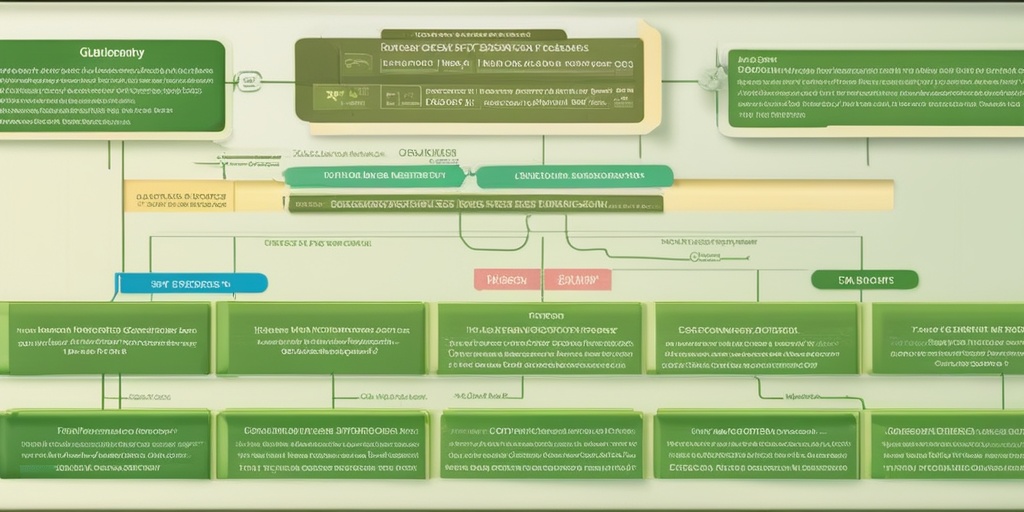“`html
What Is Glucocerebrosidosis?
Glucocerebrosidosis, often referred to as Gaucher’s disease, is a rare genetic disorder that results from a deficiency in the glucocerebrosidase enzyme. This enzyme plays a crucial role in breaking down a fatty substance called glucocerebroside into glucose and ceramide. When this enzyme is deficient or not functioning properly, glucocerebroside accumulates in various organs, particularly the spleen, liver, and bone marrow, leading to a range of health complications.
Understanding the Genetics
Glucocerebrosidosis is inherited in an autosomal recessive manner, meaning that a person must inherit two copies of the mutated gene (one from each parent) to develop the disease. The gene responsible for this condition is located on chromosome 1 and is known as GBA. Individuals who inherit only one copy of the mutated gene are considered carriers and typically do not exhibit symptoms.
Types of Glucocerebrosidosis
There are three main types of glucocerebrosidosis, each varying in severity and symptoms:
- Type 1: The most common form, which primarily affects the spleen and liver but does not typically involve the nervous system.
- Type 2: A more severe form that affects the nervous system and usually leads to early childhood death.
- Type 3: A form that includes both visceral and neurological symptoms, with a variable prognosis.
Glucocerebrosidosis Symptoms
The symptoms of glucocerebrosidosis can vary significantly depending on the type and severity of the disease. Common symptoms include:
- Enlarged spleen (splenomegaly): This is one of the most common symptoms, leading to abdominal discomfort and a feeling of fullness.
- Enlarged liver (hepatomegaly): Similar to splenomegaly, this can cause abdominal pain and discomfort.
- Bone pain and fractures: The accumulation of glucocerebroside in the bone marrow can lead to bone crises, resulting in severe pain and an increased risk of fractures.
- Anemia: A decrease in red blood cells can lead to fatigue, weakness, and pale skin.
- Fatigue: Chronic fatigue is common due to anemia and the body’s struggle to function normally.
- Neurological symptoms: In types 2 and 3, symptoms may include seizures, developmental delays, and problems with coordination.
Recognizing Early Signs
Early diagnosis of glucocerebrosidosis is crucial for effective management. Parents and caregivers should be vigilant for signs such as unexplained bruising, frequent infections, or unusual bone pain in children. If you suspect glucocerebrosidosis, it’s essential to consult a healthcare professional for appropriate testing and diagnosis.
Importance of Genetic Testing
Genetic testing can confirm the diagnosis of glucocerebrosidosis by identifying mutations in the GBA gene. This testing is particularly important for individuals with a family history of the disease or those exhibiting symptoms. Early diagnosis can lead to timely interventions, including enzyme replacement therapy, which can significantly improve quality of life.
For more information on glucocerebrosidosis and related health topics, consider visiting Yesil Health AI, a valuable resource for evidence-based health answers.
In conclusion, understanding glucocerebrosidosis is vital for those affected and their families. By recognizing symptoms early and seeking appropriate medical advice, individuals can manage this condition more effectively and lead healthier lives. 🌟
“`

“`html
Causes of Glucocerebrosidosis
Glucocerebrosidosis, also known as Gaucher’s disease, is a genetic disorder that arises from a deficiency in the glucocerebrosidase enzyme. This enzyme plays a crucial role in breaking down a fatty substance called glucocerebroside into glucose and ceramide. When this enzyme is deficient or malfunctioning, glucocerebroside accumulates in various organs, leading to a range of health issues.
Genetic Mutations
The primary cause of glucocerebrosidosis is mutations in the GBA gene, which provides instructions for producing the glucocerebrosidase enzyme. These mutations can lead to:
- Enzyme Deficiency: A significant reduction in the enzyme’s activity, resulting in the accumulation of glucocerebroside.
- Enzyme Dysfunction: The enzyme may be produced but not function correctly, leading to similar accumulation issues.
There are several known mutations in the GBA gene, and their severity can vary. Some mutations lead to a more severe form of the disease, while others may result in a milder phenotype.
Types of Glucocerebrosidosis
Glucocerebrosidosis is classified into three main types, each with distinct characteristics:
- Type 1: The most common form, which primarily affects the spleen, liver, and bones, but does not typically involve the nervous system.
- Type 2: A more severe form that affects the nervous system and usually presents in infancy, leading to rapid progression and early mortality.
- Type 3: A form that has both visceral and neurological symptoms, with a later onset than Type 2.
Risk Factors for Glucocerebrosidosis
Understanding the risk factors associated with glucocerebrosidosis can help in early diagnosis and management. While the disease is primarily genetic, certain factors can increase the likelihood of developing this condition.
Family History
One of the most significant risk factors for glucocerebrosidosis is a family history of the disease. Since it is inherited in an autosomal recessive manner, both parents must carry a mutated copy of the GBA gene for their child to be affected. If a parent has Gaucher’s disease or is a carrier, the risk of passing the condition to their offspring increases.
Ethnic Background
Certain ethnic groups are more prone to glucocerebrosidosis due to higher carrier rates of the GBA gene mutations. Notably:
- Ashkenazi Jews: This group has a significantly higher prevalence of glucocerebrosidosis, with approximately 1 in 450 individuals affected.
- Other Populations: While less common, cases have been reported in non-Jewish populations, including those of French Canadian and Irish descent.
Age and Gender
While glucocerebrosidosis can manifest at any age, certain types tend to present in childhood or early adulthood. Additionally, some studies suggest that males may be more likely to exhibit symptoms than females, although both genders can be affected.
Environmental Factors
Although glucocerebrosidosis is primarily genetic, some research indicates that environmental factors may play a role in the expression of the disease. Factors such as exposure to certain toxins or infections could potentially influence the severity of symptoms in genetically predisposed individuals.
In summary, glucocerebrosidosis is a complex condition primarily caused by genetic mutations in the GBA gene, leading to a deficiency in the glucocerebrosidase enzyme. Understanding the causes and risk factors associated with this disease is crucial for early detection and effective management. If you have a family history of glucocerebrosidosis or belong to a high-risk ethnic group, consider discussing genetic testing and counseling with a healthcare professional. 🧬
“`

“`html
Diagnosis of Glucocerebrosidosis
Diagnosing glucocerebrosidosis, a rare genetic disorder, involves a combination of clinical evaluation, laboratory tests, and genetic analysis. This condition is primarily caused by a deficiency in the glucocerebrosidase enzyme, which is crucial for breaking down a fatty substance called glucocerebroside. When this enzyme is deficient, glucocerebroside accumulates in various organs, leading to a range of symptoms.
Clinical Evaluation
The first step in diagnosing glucocerebrosidosis typically involves a thorough clinical evaluation. Healthcare providers will look for common symptoms, which may include:
- Fatigue and weakness
- Enlarged liver and spleen (hepatosplenomegaly)
- Bone pain or fractures
- Skin changes, such as easy bruising
- Neurological symptoms, including cognitive decline
These symptoms can vary widely among individuals, making clinical evaluation essential for identifying potential cases of glucocerebrosidosis.
Laboratory Tests
Once a healthcare provider suspects glucocerebrosidosis, they will typically order laboratory tests to confirm the diagnosis. The most common test is a blood test that measures the activity of the glucocerebrosidase enzyme. A significantly reduced enzyme activity level can indicate a deficiency, supporting the diagnosis.
Additionally, a glucocerebroside substrate test may be performed to measure the levels of glucocerebroside in the blood or other tissues. Elevated levels can further confirm the diagnosis.
Genetic Testing
Genetic testing plays a crucial role in diagnosing glucocerebrosidosis, especially for individuals with a family history of the condition. This testing can identify mutations in the GBA gene, which is responsible for producing the glucocerebrosidase enzyme. Identifying these mutations can help confirm the diagnosis and provide valuable information for family planning and management.
In summary, diagnosing glucocerebrosidosis involves a comprehensive approach that includes clinical evaluation, laboratory tests, and genetic analysis. Early diagnosis is vital for effective management and treatment of this condition.
Treatment Options for Glucocerebrosidosis
While there is currently no cure for glucocerebrosidosis, various treatment options can help manage symptoms and improve the quality of life for affected individuals. The choice of treatment often depends on the severity of the disease and the specific symptoms present.
Enzyme Replacement Therapy (ERT)
One of the most common treatments for glucocerebrosidosis is enzyme replacement therapy (ERT). This therapy involves administering a synthetic version of the glucocerebrosidase enzyme to help reduce the accumulation of glucocerebroside in the body. ERT has been shown to significantly improve symptoms such as:
- Enlarged liver and spleen
- Bone pain and fractures
- Fatigue and overall well-being
Patients typically receive ERT through intravenous infusions every two weeks, and while it does not cure the disease, it can effectively manage symptoms and improve quality of life.
Substrate Reduction Therapy (SRT)
Another treatment option is substrate reduction therapy (SRT), which aims to decrease the production of glucocerebroside. This therapy can be particularly beneficial for patients who may not respond well to ERT or have specific contraindications. SRT works by inhibiting the enzyme responsible for producing glucocerebroside, thus reducing its accumulation in the body.
Supportive Care
In addition to ERT and SRT, supportive care is essential for managing glucocerebrosidosis. This may include:
- Pain management strategies
- Physical therapy to improve mobility and strength
- Regular monitoring of organ function
- Psychological support for emotional well-being
Supportive care plays a vital role in enhancing the overall quality of life for individuals living with glucocerebrosidosis.
Future Directions in Treatment
Research is ongoing to explore new treatment options for glucocerebrosidosis, including gene therapy and novel pharmacological approaches. These advancements hold promise for more effective and targeted therapies in the future, potentially transforming the landscape of treatment for this condition.
In conclusion, while glucocerebrosidosis presents significant challenges, various treatment options are available to help manage symptoms and improve the quality of life for those affected. Early diagnosis and a tailored treatment plan are crucial for optimal outcomes. 🌟
“`

“`html
Living with Glucocerebrosidosis
Glucocerebrosidosis, also known as Gaucher disease, is a rare genetic disorder that affects the body’s ability to break down a specific type of fat called glucocerebroside. This condition arises from a deficiency in the glucocerebrosidase enzyme, which is crucial for metabolizing glucocerebroside into glucose and ceramide. Living with this condition can present various challenges, but understanding the disease and its management can significantly improve the quality of life for those affected.
Understanding the Symptoms
Symptoms of glucocerebrosidosis can vary widely among individuals, but common manifestations include:
- Anemia: A decrease in red blood cells can lead to fatigue and weakness.
- Enlarged Organs: The liver and spleen may become enlarged, causing discomfort and other health issues.
- Bone Pain: Patients often experience bone crises, which can be extremely painful and debilitating.
- Neurological Issues: Some forms of the disease can lead to neurological complications, including seizures and cognitive decline.
Managing the Condition
While there is currently no cure for glucocerebrosidosis, several treatment options can help manage symptoms and improve the quality of life:
- Enzyme Replacement Therapy (ERT): This treatment involves regular infusions of the missing glucocerebrosidase enzyme, helping to reduce the accumulation of glucocerebroside in the body.
- Substrate Reduction Therapy (SRT): This approach aims to decrease the production of glucocerebroside, thereby alleviating some symptoms.
- Palliative Care: Supportive care can help manage pain and other symptoms, improving overall well-being.
In addition to medical treatments, lifestyle modifications can also play a crucial role in managing glucocerebrosidosis. Regular exercise, a balanced diet, and stress management techniques can help patients maintain their health and cope with the challenges of the disease. 🏃♂️🥗
Emotional and Psychological Support
Living with a chronic condition like glucocerebrosidosis can take a toll on mental health. It’s essential for patients and their families to seek emotional support. Joining support groups, whether in-person or online, can provide a sense of community and understanding. Additionally, counseling or therapy can be beneficial in navigating the emotional complexities of living with a chronic illness. 💬❤️
Future Research and Outlook
The future of glucocerebrosidosis research is promising, with ongoing studies aimed at improving treatment options and understanding the disease better. Researchers are exploring various avenues, including:
Gene Therapy
Gene therapy holds potential as a revolutionary treatment for glucocerebrosidosis. By correcting the underlying genetic defect that causes the deficiency in the glucocerebrosidase enzyme, this approach could potentially offer a long-term solution for patients. Early trials are underway, and the results are eagerly anticipated. 🔬✨
New Enzyme Replacement Therapies
As research progresses, new formulations of enzyme replacement therapies are being developed. These may offer improved efficacy, reduced side effects, and less frequent dosing, making treatment more manageable for patients. The goal is to enhance the overall treatment experience and outcomes for those living with glucocerebrosidosis.
Understanding Disease Variability
Researchers are also focusing on understanding the variability in symptoms and disease progression among patients. By identifying genetic and environmental factors that influence the severity of glucocerebrosidosis, personalized treatment plans can be developed, leading to better management strategies tailored to individual needs.
Advancements in Supportive Care
In addition to direct treatments for glucocerebrosidosis, advancements in supportive care are also being explored. This includes better pain management techniques, nutritional support, and psychological interventions to enhance the overall quality of life for patients.
As research continues to evolve, the outlook for individuals living with glucocerebrosidosis is becoming increasingly optimistic. With ongoing advancements in treatment and support, patients can look forward to a future with improved management options and a better quality of life. 🌟
“`

“`html
Frequently Asked Questions about Glucocerebrosidosis
What is Glucocerebrosidosis?
Glucocerebrosidosis is a genetic disorder caused by the deficiency of the enzyme glucocerebrosidase. This enzyme is crucial for breaking down a fatty substance called glucocerebroside. When this process is impaired, it leads to the accumulation of glucocerebroside in various organs, particularly the spleen, liver, and bone marrow.
What are the symptoms of Glucocerebrosidosis?
Symptoms can vary widely but may include:
- Enlarged spleen and liver
- Bone pain and fractures
- Fatigue and anemia
- Neurological issues in some types
How is Glucocerebrosidosis diagnosed?
Diagnosis typically involves:
- Blood tests to measure glucocerebrosidase enzyme activity
- Genetic testing to identify mutations
- Imaging studies to assess organ enlargement
What treatments are available for Glucocerebrosidosis?
Treatment options may include:
- Enzyme replacement therapy to provide the missing glucocerebrosidase
- Substrate reduction therapy to decrease the production of glucocerebroside
- Supportive care to manage symptoms
Can Glucocerebrosidosis be prevented?
Currently, there is no known way to prevent glucocerebrosidosis as it is a genetic disorder. However, genetic counseling may be beneficial for families with a history of the disease.
What is the relationship between Glucocerebrosidase and Glucocerebroside?
The glucocerebrosidase enzyme is responsible for breaking down glucocerebroside. A deficiency in this enzyme leads to the accumulation of glucocerebroside, which is the hallmark of glucocerebrosidosis.
How can I learn more about Glucocerebrosidosis?
For more information, consider consulting healthcare professionals or visiting reputable medical websites that specialize in genetic disorders and enzyme deficiencies.
Is there a support group for those affected by Glucocerebrosidosis?
Yes, there are various support groups and organizations dedicated to helping individuals and families affected by glucocerebrosidosis. These groups can provide resources, information, and community support.
“`




